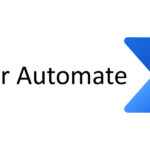I. Introduction
A. Understanding Google Ads
Google Ads, formerly known as Google AdWords, stands as one of the most powerful tools for businesses aiming to expand their online presence and reach their target audience effectively. This advertising platform operates on a pay-per-click (PPC) model, allowing businesses to display ads on Google’s network, including its search engine, partner sites, and various digital platforms. Understanding the fundamentals of Google Ads is crucial for leveraging its potential to drive traffic, boost conversions, and maximize ROI.
II. Setting Up
A. Account Creation
The initial step in utilizing Google Ads is creating an account. This process involves selecting the right campaign goals, defining the target audience, and specifying the advertising budget. Businesses can choose between different campaign types such as Search Ads, Display Ads, Video Ads, Shopping Ads, or App Ads, based on their objectives and target demographics.
B. Campaign Structure
A well-organized campaign structure is pivotal for effective ad management. Segregating campaigns into specific ad groups based on relevant themes or keywords helps streamline targeting and budget allocation. Each ad group should contain a set of closely related keywords, ensuring ads are displayed to the most relevant audience, thereby improving click-through rates and conversions.
III. Optimization Strategies
A. Keyword Selection
Strategic keyword selection forms the backbone of a successful Google Ads campaign. Conducting thorough keyword research using tools like Google Keyword Planner or third-party tools helps identify high-volume, relevant keywords that align with the business niche and target audience. Incorporating a mix of broad, exact match, and long-tail keywords enhances campaign effectiveness, capturing diverse search intents and widening the reach.
B. Ad Copy and Design
Compelling ad copy and visually engaging designs are pivotal for attracting and retaining audience attention in Google PPC advertising. Crafting concise, compelling ad copies with clear CTAs (Call-to-Actions) and incorporating relevant keywords can significantly boost ad relevance and click-through rates. Additionally, utilizing eye-catching visuals, such as high-quality images or videos, enhances ad appeal and increases the likelihood of conversions.
In Google PPC advertising, the character limit for ad copy is limited, making every word count. The ad content needs to be compelling enough to capture the audience’s interest within a concise format. By strategically integrating relevant keywords into the ad copy, businesses can ensure alignment with users’ search queries, thereby increasing the ad’s visibility and relevance.
Moreover, the visual aspect plays a critical role in Google PPC campaigns. Incorporating captivating images or videos that resonate with the brand message and target audience can significantly impact user engagement. These visuals not only grab attention but also convey the essence of the advertisement effectively, encouraging users to take desired actions, such as clicking through to the website or making a purchase.
IV. Monitoring and Analysis
A. Tracking Performance
Continuous monitoring and tracking of campaign performance are essential for identifying areas of improvement and optimizing ad spend. Utilizing Google Analytics or other tracking tools allows businesses to measure key metrics like click-through rates, conversion rates, and cost per acquisition. Analyzing these metrics enables informed decision-making, facilitating adjustments to optimize campaigns for better performance.
B. A/B Testing
A/B testing, also known as split testing, is a valuable technique to assess the effectiveness of different ad elements. By creating variations of ads and testing them against each other, businesses can identify which ad components – such as headlines, visuals, or CTAs – resonate best with the audience. This iterative process of testing and refining helps in fine-tuning ad campaigns, ultimately improving their effectiveness and maximizing ROI.
V. Conclusion
Effectively harnessing the potential of Google Ads demands a comprehensive understanding of its functionalities and continuous optimization efforts. By following a structured approach from setup to optimization and analysis, businesses can leverage this powerful advertising platform to expand their reach, drive conversions, and achieve their business goals in the competitive digital landscape. Constant adaptation and refinement based on data-driven insights remain integral in maximizing the benefits of Google Ads for sustainable business growth.








